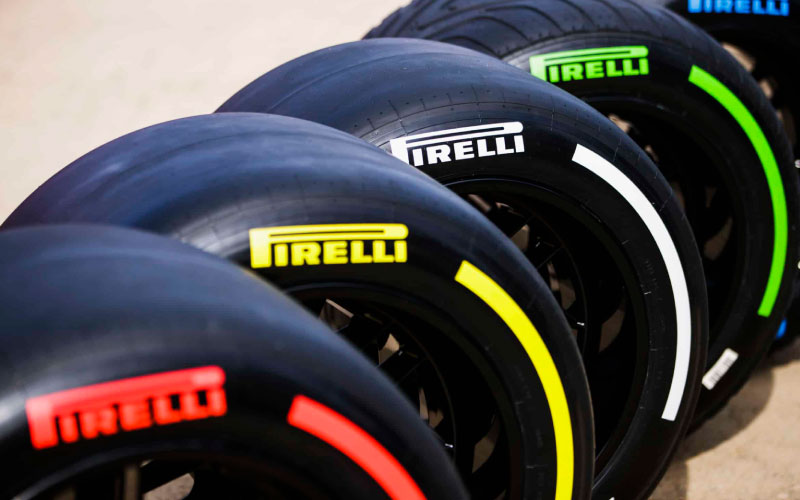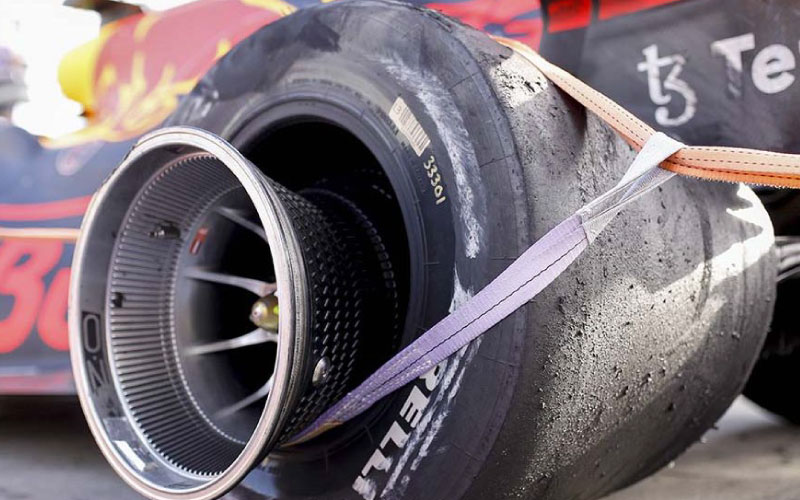- supercars.com.gh
- April 29, 2022
Tires have been integral to winning Grand Prix races since the competition’s inception. After all, the tire of an F1 race car is the only point of contact between the car and the road. So, it makes sense that a lot of engineering is directed towards the tire.
While tire technology has advanced alongside other aspects of Formula 1, a core question has remained constant since the inaugural world championship race in 1950. How do you get the maximum grip out of your rubber without wearing it too quickly or too soon?
Since 2010, Pirelli has been making Formula One tires. They are expected to be doing so until at least 2024. Since Pirelli and F1 have an exclusive agreement, Pirelli is the only company providing the sport its tires. According to Formula One regulations, teams are only allowed to utilize Pirelli tires; they are not allowed to use any other tire brands.
Natural rubber, styrene-butadiene rubber, polybutadiene rubber, and butyl rubber are the four main types of rubber that typically make up a tire. The sidewall and tread of a tire include around 55 percent of the rubber in the tire. These parts are made of natural styrene-butadiene and polybutadiene rubbers.
The inner liner of a tire is with butyl rubber and butyl rubber that has been halogenated. While F1 tires are made up of 90% synthetic rubber and 10% natural rubber, typical passenger car tires are constructed of a mixture of 55% synthetic and 45% natural rubber.
However, the exact chemical breakdown of F1 tires is unknown because manufacturers protect their tire formulas.
F1 wheel sizes have increased from 13 inches to 18 inches in 2022. Tire sizes have also grown from 660mm to 720mm.
Because 18-inch wheels have a larger sidewall, they are typically more flexible than the smaller tires. The tires act as shock absorbers and can provide a more excellent cushion when going over bumps and holes. Newer tires are also available that are faster and work better than 13 inches wheels. So, the 18 inches tires degrade less than the previous one.
The limit on wheel size is due to its profiling system.13; inches tires have a lower profile than 18 inches tires. An 18-inch wheel has a 15-inch inner rim. With the larger diameter wheel, it takes more metal, and that metal is moved farther away from the wheel bearing. So, this thing is missing 13 inches of tires.
There are five main types of F1 tires, each with a distinct function, these five can be broadly divided into two groups:
- Dry tires
- Wet tires
Dry tires are used on dry roads, whereas wet tires are utilised on slick surfaces.
- Soft
- Medium
- Hard
There are three types of dry tires for F1. All of these have a slick thread, this means, the tire’s outside surface is smooth without grooves. These can be distinguished based on the color of the Pirelli markings on the tire. The softer the tire, the more grip it offers the driver.
Wet and intermediate tires are solely produced for damp conditions. When the track has little standing water, intermediate tires are used. ET (EinpressTiefe) tires are utilised when the track has substantial standing water. EinpressTiefe means the distance between the mounting surface and the geometric center of the wheel expressed in mm. Here, “standing water” refers to the layer of water that accumulates on a railway after a downpour.
Advantage
- A softer tire provides you with more grip at the expense of compromised durability.
- Harder tires yield less grip, but they will maintain it for longer.
- Maximal grip results from maximum rubber-to-road contact.
Disadvantage
- Softer tires can not maintain grip longer.
- Harder tires grip less than softer tires.
- Medium tires work less than both.
- Even in dry weather, they can’t adequately grip the road, making steering more difficult. They can make the vehicle skid while making abrupt stops.
Advantage
Wet tires, on the other hand, have a ‘grooved‘ tread. The purpose of the grooves is to break the surface tension of any water on the road, helping to displace it.
Disadvantage
Intermediate tires are designed to be used in conditions too wet for slick tires and too dry for wet tires. They are carved with grooves similar to rain tires but shallower to prevent excessive heat buildup. They are constructed with rubber compounds that are slightly softer than slick tires.
Due to the COIVD-19 epidemic, Pirelli postponed the transition of Formula 1 from 13-inch to 18-inch rims from 2021 to 2022. Because the sizes are far more superior to the 13-inch, according to Pirelli, the 18-inch wheel is more effective for transferring racing technologies to the road meaning the new tires are faster, offer more grip, and last longer.
It is impossible to get your hands on Pirelli tires wherever you are. As you may already know, F1 tires are not road legal. All the tires go back to Pirelli after the race weekend is complete. They are taken back to their facility and examined for flaws before being destroyed or placed in storage to prevent them from being acquired by rival tire developers.
Have Any Question?
If you have a question, call or email us.
We will get back to you as soon as possible!











